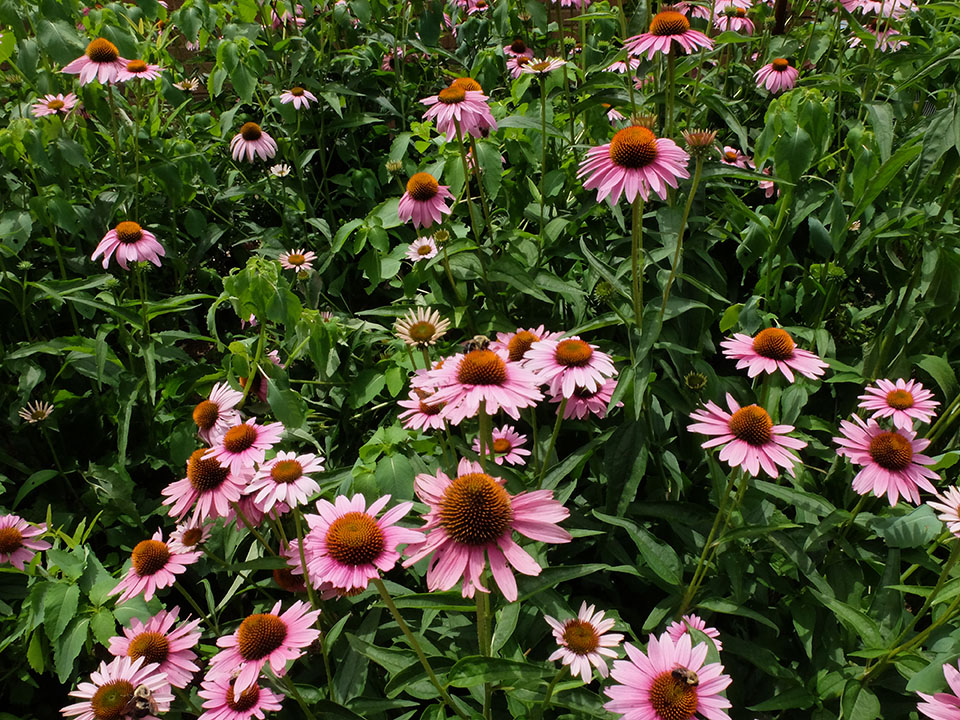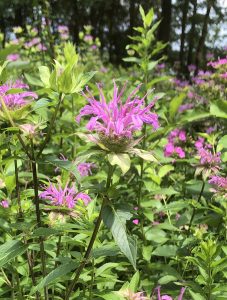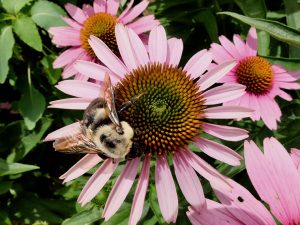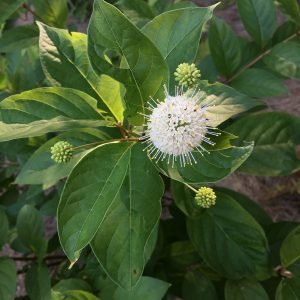Native Focus
Convert half your lawn to native plants and you will be contributing to a homegrown national park.

In March I went on a trip to Belize and returned to southern New Jersey one week before the coronavirus lockdown. In Belize, I read Douglas Tallamy’s newest book Nature’s Best Hope, A New Approach to Conservation That Starts in Your Yard. Consider this my review of the book and CU Maurice River’s invitation to attend our virtual Book Circle on the same. Librarian Suzy Merighi will be leading this event on July 30, leaving you some time to order and read the book. The signup for the book circles are kept modest for discussion purposes, but should we have an abundance of interest we might open another session.

There are many authors’ works that I especially enjoy. Some offer new perspectives about how we might change the paradigm from a planet that was estimated to have been self-sustaining last in 1975 with a population of 4 billion, to a planet in which we might possibly survive. Currently, we are 7.8 billion and growing. Dr. Tallamy’s writings give me hope, something I desperately needed when faced with the possibility of a world pandemic, now a reality.
The hope, his optimism? Tallamy’s fundamental concept is that collectively property owners can create a “homegrown national park” by converting half of their lawn to native plantings. The resulting space would be 20 million acres. How big is that? Tallamy writes, “It’s bigger than the combined areas of the Everglades, Yellowstone, Grand Teton, Canyonlands, Mount Rainier, North Cascades, Badlands, Olympic, Sequoia, Grand Canyon, Denali, and the Great Smokey Mountains National Park.” He points out that this can be accomplished by collective will vs. regulation or waiting for government to act.
 Nature can have great restorative powers, and when jump-started by people lots of positive changes can occur. Southern New Jersey’s eagle population is a great example. We were down to one remaining pair of eagles here in the late 1980s, and today we have hundreds of pairs throughout the state. Habitat is key in this success story. Basically, when we create the “Homegrown National Park” we are creating new habitat for insects, plants, and animals.
Nature can have great restorative powers, and when jump-started by people lots of positive changes can occur. Southern New Jersey’s eagle population is a great example. We were down to one remaining pair of eagles here in the late 1980s, and today we have hundreds of pairs throughout the state. Habitat is key in this success story. Basically, when we create the “Homegrown National Park” we are creating new habitat for insects, plants, and animals.
Tallamy explains the unique relationships between insects, plants, and animals—and ultimately us. This is the story of our future survival on this planet. The specialized connections between insects and plants are the building blocks on which all life depends. As Tallamy notes, “Insects pollinate 87.5 percent of all plants and 90 percent of all flowering plants, and plants turn energy from the sun into the food that we and an unimaginable diversity of birds, mammals, reptiles, amphibians and freshwater fishes need to exist. Insects are also the primary means by which the food created by plants is delivered to animals.” Remember that insects’ lifecycles evolved in such a way as to specialize their utilization of specific plants. Plants incorporate protective properties that are toxic to many creatures, but individual species of insects developed adaptations to specific plants and thus can use them for food. This is why we need to provide a variety of native plants for native insects, so that this crucial link is unbroken.

Tallamy gives many examples of this evolutionary mechanism. One of his prior books, Bringing Nature Home, goes into greater detail. However, Nature’s Best Hope takes the concept further; it talks about the importance of connectiveness. In my life’s work, we have tried to connect large habitats and corridors for wildlife to inhabit and traverse. Therefore, we are continually looking at connecting tracts along waterways and linking forests to each other. Why? Because it is essential for creatures to be able to move from one area to another, not only for food and nesting habitat but to enlarge the gene pool and maintain healthy populations. Tallamy says it well: “Whether we like nature or not, none of us will be able to live for long in a world without it.”
Tallamy looks at urbanization and the disconnects it has caused between man and nature. And he advocates for an opportunity that everyone can play a connective role in healing that division: Forming bridges of life, changing sterile lawn into habitat, and giving people a chance not only to enjoy nature on vacation but to benefit from its restorative effects year-round, on their own properties.
I hope you will read this book and his former title as well, Bringing Nature Home. You’ll be glad you did.
Primary source: Birder’s Handbook.









